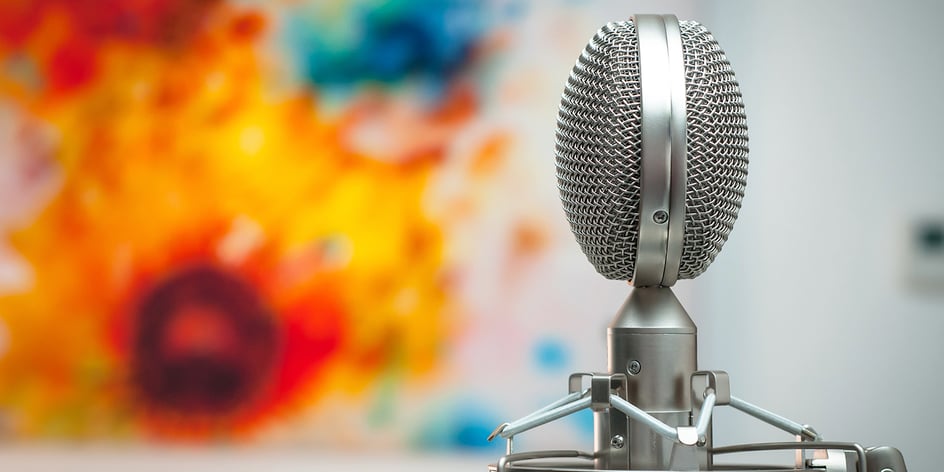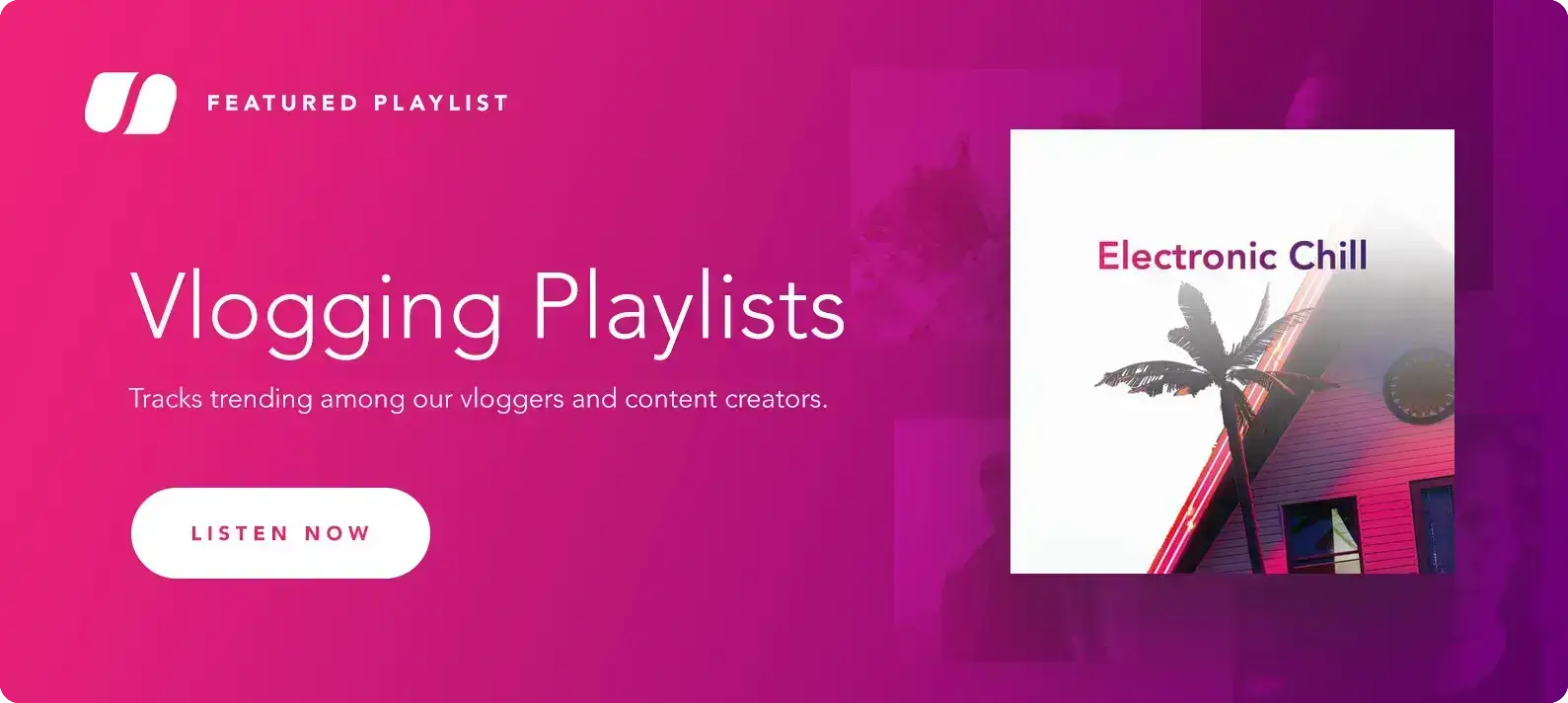
Mar 4, 2020
There’s nothing worse than working all day on a video project, only to discover that the sound dips in and out.
Or maybe it’s just complete trash, and now you have to reshoot stuff or try to dub scenes (which means matching new voiceover with original video).
Filmmakers and vloggers love creating content for their audiences to enjoy. And while editing is an important part of that process, it takes a certain kind of person to really enjoy this side of making videos.
This is why we look for “shortcuts” or “life hacks,” even in creative things. If we can find a way to speed up or simplify a part of the process that we don’t like, we’re happy to try it out.
Sometimes, that's means finding tools like a storyboard template or a shot list template. Other times all you need to make things easier for yourself is the right gear. You might already have some great cameras and a sweet lighting setup. But when it comes to video, your visuals are only as good as the audio you pair them with.
To help you record better audio (and simplify your editing process), we’re going to talk about four of the best types of microphones. And whether you’re a filmmaker, a vlogger, or somewhere in between, we’ll also give you our recommendations of mics to check out.
Popular Types of Microphones (And How To Use Them)
The most valuable detail in choosing a microphone is knowing what you’re going to use it for.
Are you looking for the best microphone for YouTube? Filmmaking? Corporate video production?
It’s possible to find a multi-purpose mic to fit all of your needs, but each type comes with different strengths and weaknesses.
(That's why it's always a good idea to pay attention to the camera settings and capabilities on different models before you make a purchase.)
Thinking about that in advance can help you pinpoint what you need. That way, you can invest in something you already know will make your life easier.
As we mentioned before, there are four types of microphones that are common for vloggers and filmmakers. They are dynamic, condenser, lavalier/lapel, and shotgun mics.
Dynamic Microphones
Think of these as your go-to studio mics. They’re not especially sensitive, so they work for loud sources. They also tend to be some of the cheapest mics specifically for studio work.
Dynamic mics have a wide, unidirectional pattern of pickup, which means they work almost like a spotlight — point them in a direction to capture sound there, as well as to either side, but not directly behind the mic (which can also work well on interior or action sets).
Condenser Microphones
If you’re mostly interested in high-quality studio mics for podcasts or voiceover work, you’ll want to check out condenser mics. Everything about them is similar to dynamic mics, except that they’re more expensive and deliver clearer single-source audio recordings.
They also deliver a variety of “directional” pickup patterns. You can still go with the unidirectional shape, but most condenser mics also offer options for omnidirectional (where no sound is cancelled) or bidirectional (for interviews and conversations) recording.
Again, condenser mics come with a higher price tag, but they’ll give you a little more versatility in a studio microphone.
Lavalier/Lapel Microphones
These are a filmmaker’s best friend. Lavalier (or just “lav”) mics are small condenser mics that you can attach to on-screen talent during a shoot. And they work wirelessly, so you shouldn’t have to worry about proximity when you’re working with a lav mic.
The sound quality won’t be perfect, so you’ll only want to rely on getting good audio from the person wearing the mic. That’s a big tradeoff, especially if you can only afford one mic to get and aren’t sure how you might use it in the future.
But lav mics are uniquely suited to a very specific job, and that job is something you can use for short films, interviews, or vlogs.
Shotgun Microphones
Technically this is a “style” of microphone rather than a specific type. But since every filmmaker has at least one shotgun mic in their kit bag, we felt it was important to give them a shoutout.
We’ve talked a bit about “pickup patterns,” or the directions that mics pick up audio. Different shotgun mics will fit into different pickup patterns, but most will qualify as condenser mics. In other words, they should give you some flexibility without having to sacrifice the sound quality.
Shotgun mics are the things you see on film sets. The most useful quality about them is that they can be mounted in a variety of ways (including on a camera), which is a big reason why these are go-to mics for a lot of people.
Recommended Microphones (With Prices)
If you’ve been working in film for a long time, you might already consider yourself an audio expert. And if so, you’ll already have good mics to use in your projects.
But our industry is constantly evolving, and gear is getting cheaper and lighter and better each year. So in case you’re in the market for a new mic (or a vlogger who wants to start getting better audio) here are some mic recommendations from the Soundstripe creative team.
High-end Microphones
To get started, we put together a list of mics that we use in just about every project we work on here. And we made sure to give our favorite mics that also fit into the different types we covered in this post.
Sennheiser is a big player in the mic game, and this particular lav is the go-to mic for our inhouse video team. It’s perfect for interviews or on-the-go shoots, and delivers awesome sound quality in any situation.
We’re also big fans of this Deity shotgun mic. (It’s technically under the “condenser microphone” category.) It pretty much covers all of our on-set needs, which helps us cut down the amount of audio gear we take to shoots.
And lastly, we wanted to share our favorite dynamic mics. We use the Shure SM7B for our Keep Creating Podcast. It is an absolute beast, and is perfect for studio settings.
(But if you don’t have a soundproof place to record, the Heil Sound PR 40 is another high-quality option we love.)
Entry-level Microphones
Of course, you might not have $500+ to drop on a mic. If you’re just getting started as a filmmaker, you’ll need to be more practical when it comes to buying gear. (And that probably eliminates things like lav mics, which are limited in how you’ll use them.)
Fortunately, there are some respected brands that sell great mics for entry-level prices. You can buy a good microphone for $100 or less — obviously you won’t get the best audio quality, but we found some options that are perfect for getting started on a budget.
When it comes to camera-mounted shotgun mics, we recommend Rode’s VideoMic Pro if you can invest a little more for “broadcast quality” (which is basically the gold standard for audio quality). But Rode also sells the VideoMicro, which is probably the cheapest option you’ll find.
And since Rode is a respected brand, we’d also recommend their entry-level dynamic mic: the Procaster. But if you want something that’s cheaper than $200, the Blue Yeti is a bestselling mic that’s used by podcasters, streamers, and YouTubers all around the world.
Let Your Microphone Work For You
Once you have your new mic and are ready to work on your next project, there are a few things to keep in mind. Using the right microphone is just one way to make your life easier.
Soundstripe is a royalty free music company, and we’d be doing you a disservice if we didn’t also talk about how royalty free music and sound effects can save you time and money. (Remember, we’re all looking for ways to cut down time we spend editing!)
Traditional music licensing is a convoluted process. From finding out who to negotiate with, paying up to a few thousand dollars for a song license, and then agreeing to a regular royalty free percentage, you’ll lose a lot of time and even more money.
At Soundstripe, we’ll take care of that for you. All you need to do is choose a subscription plan, and you’ll get unlimited access to an entire library of curated, high-quality songs.
No more searching for a song you actually like or an artist who doesn’t want partial ownership of your work. With Soundstripe, you license music, add it to your project, and your work is protected forever.
You know, in some ways, royalty free music might be an easier “life hack” than finding the right microphone.
